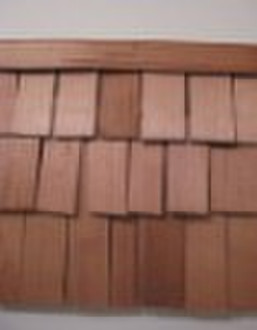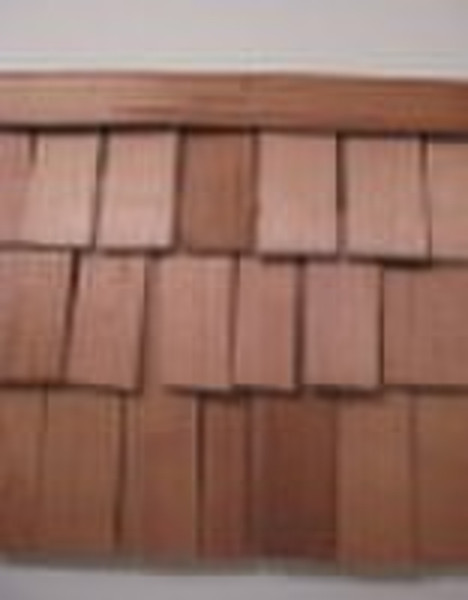wood shingles

Allen Fan
联系人姓名
基本信息
Wood shingles have a smooth, finished appearance; wood shakes have a rough-hewn look. Both are made from western red cedar. Shingles are sawn into lengths of 16, 18, or 24 inches. Shakes, which are thicker than shin-gles, are split by machine or by hand into 18 or 24-inch lengths. Both come in random widths. Shingles and shakes are laid in overlapping courses, or rows. Shingles either have a continuous underlayment of roofing felt or none at all; shakes alternate with strips of felt. Both shin-gles and shakes may be laid directly on the sheathing or over an earlier roof-ing surface, such as asphalt shingles. They are attached with galvanized roofing nails. Wood shingles and shakes usually last between 15 and 25 years, depend-ing on the roof slope and the climate. If you suspect wear, inspect the roof for curled, broken, or split shingles, and for shingles that have been lifted by wind. Look also for shingles thinned by weathering and erosion, especially around areas where an attic inspection reveals pinpoints of light (page 29). Wood shakes show their age when the wood crumbles easily underfoot or be-tween your fingers. The extent of the defects you find will indicate whether you need to repair or replace shingles or shakes. If only a few shingles or shakes are split or wind-lifted, you can repair them; those that are badly splintered or curled or that have begun to crumble should be re-placed (for instructions, see illustrations at right). If the damage is extensive, consider replacing the entire roof. To remove the nails from a dam-aged shingle or shake you’re re-placing, either rent a shingle ripper or use a hacksaw blade. To use the ripper, slide it under the shingle and around a nail; then cut the shank of the nail with a hammer blow (see at right). Since shingles and shakes are ran-dom widths, you’ll need to trim the new ones to fit the space, using a roofer’s hatchet or a saw. Leave a V4-inch clear-ance on each side of every replace-ment piece to allow for expansion of the wood.
交货条款及包装
端口: Lianyungang
付款条款
Letter of credit
Telegraphic transfer
-
支付方式
我们接受:









